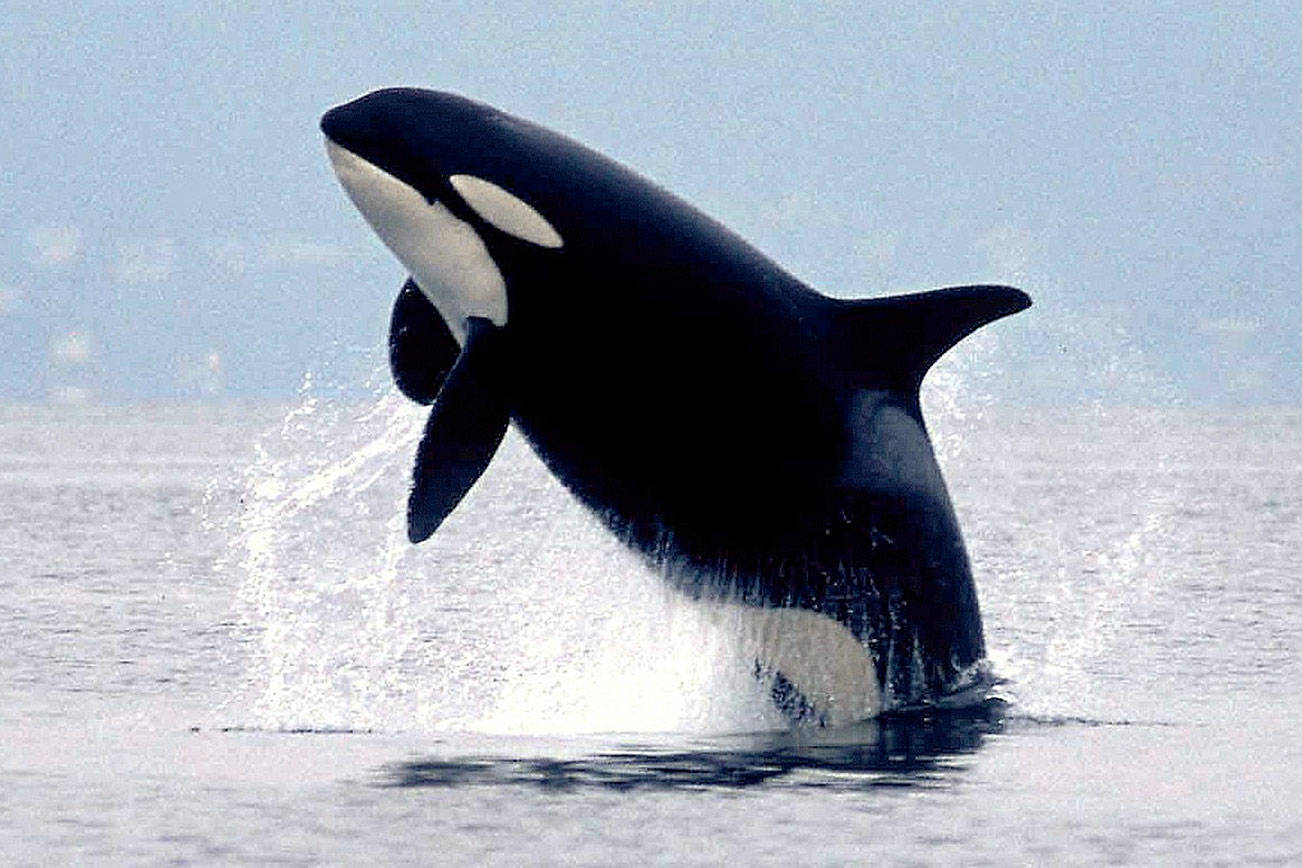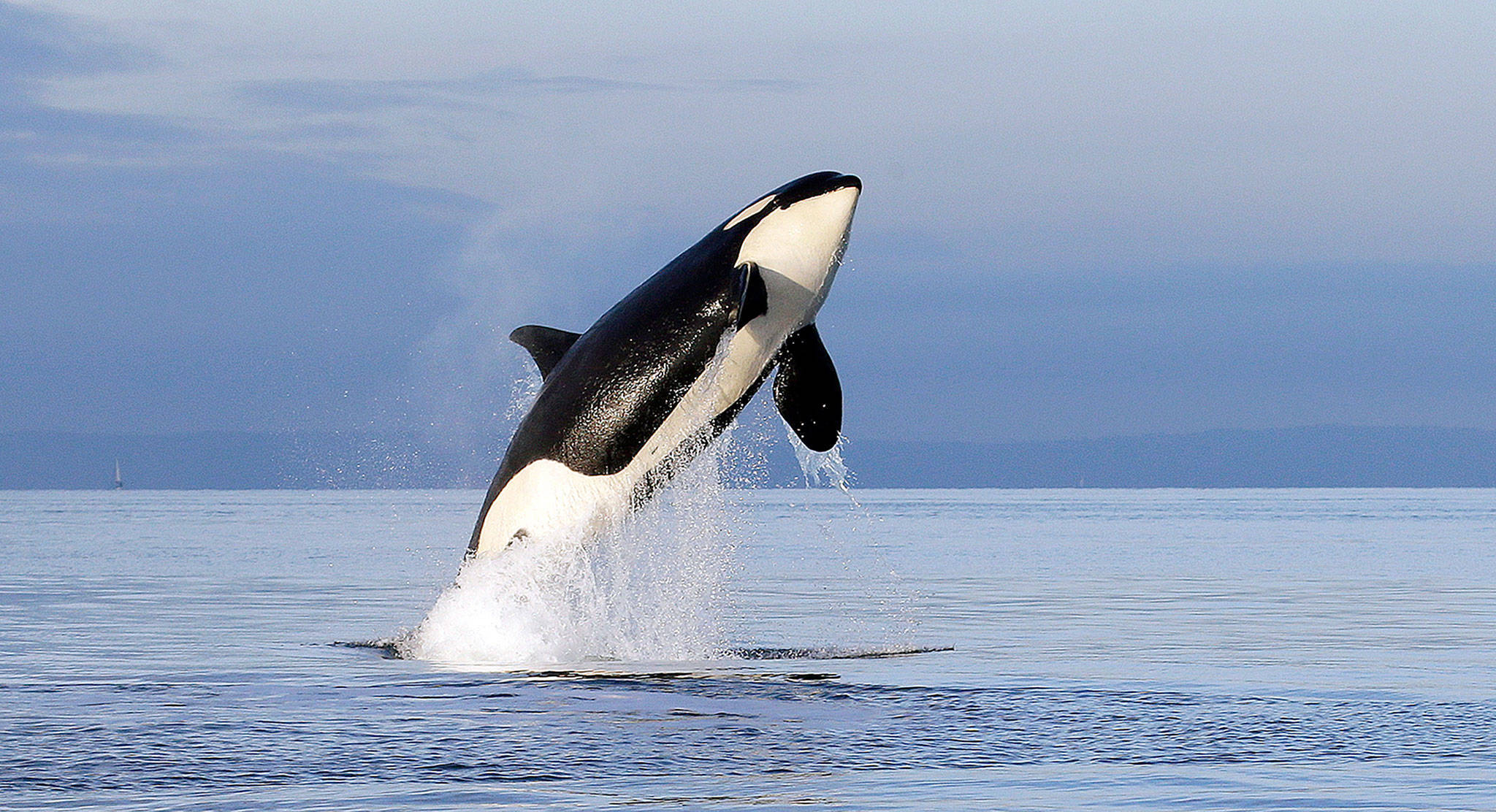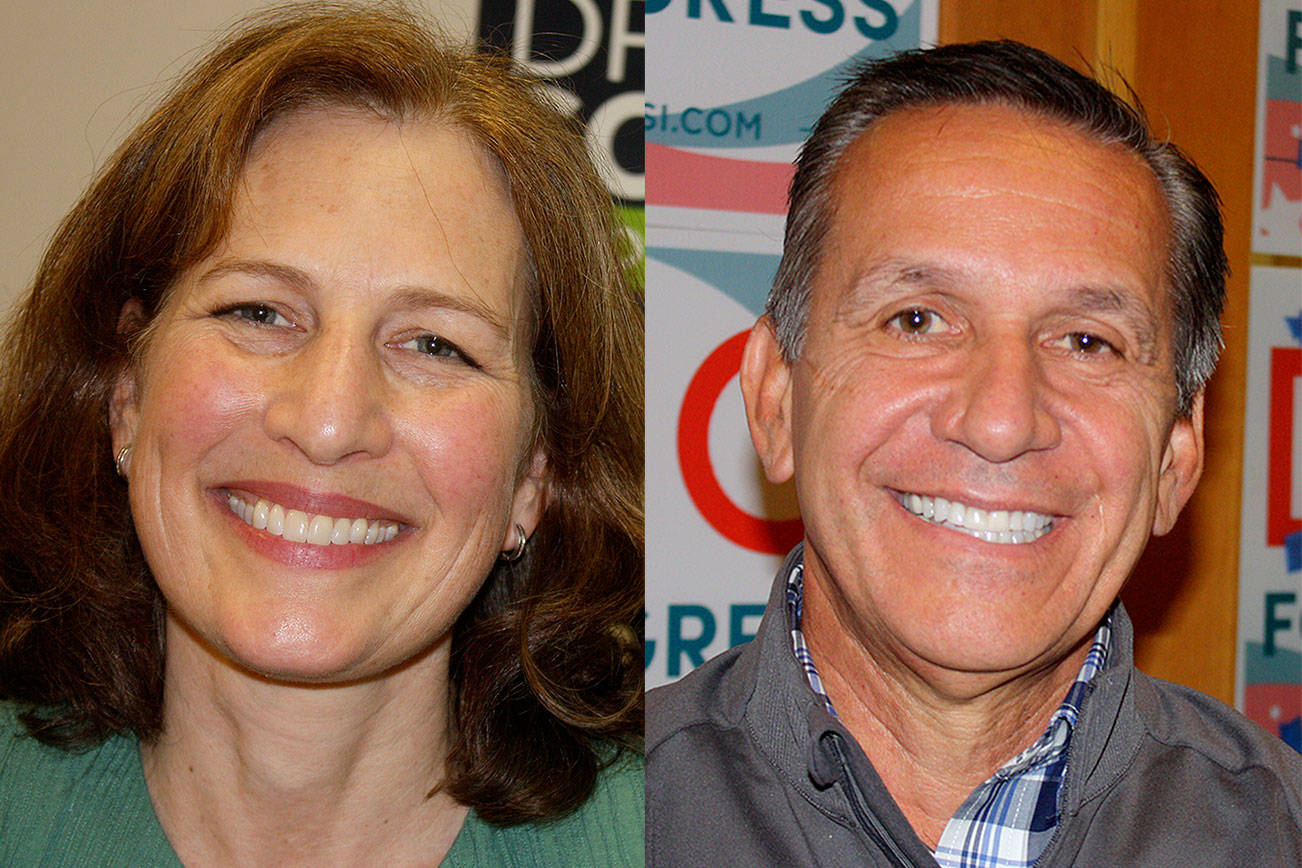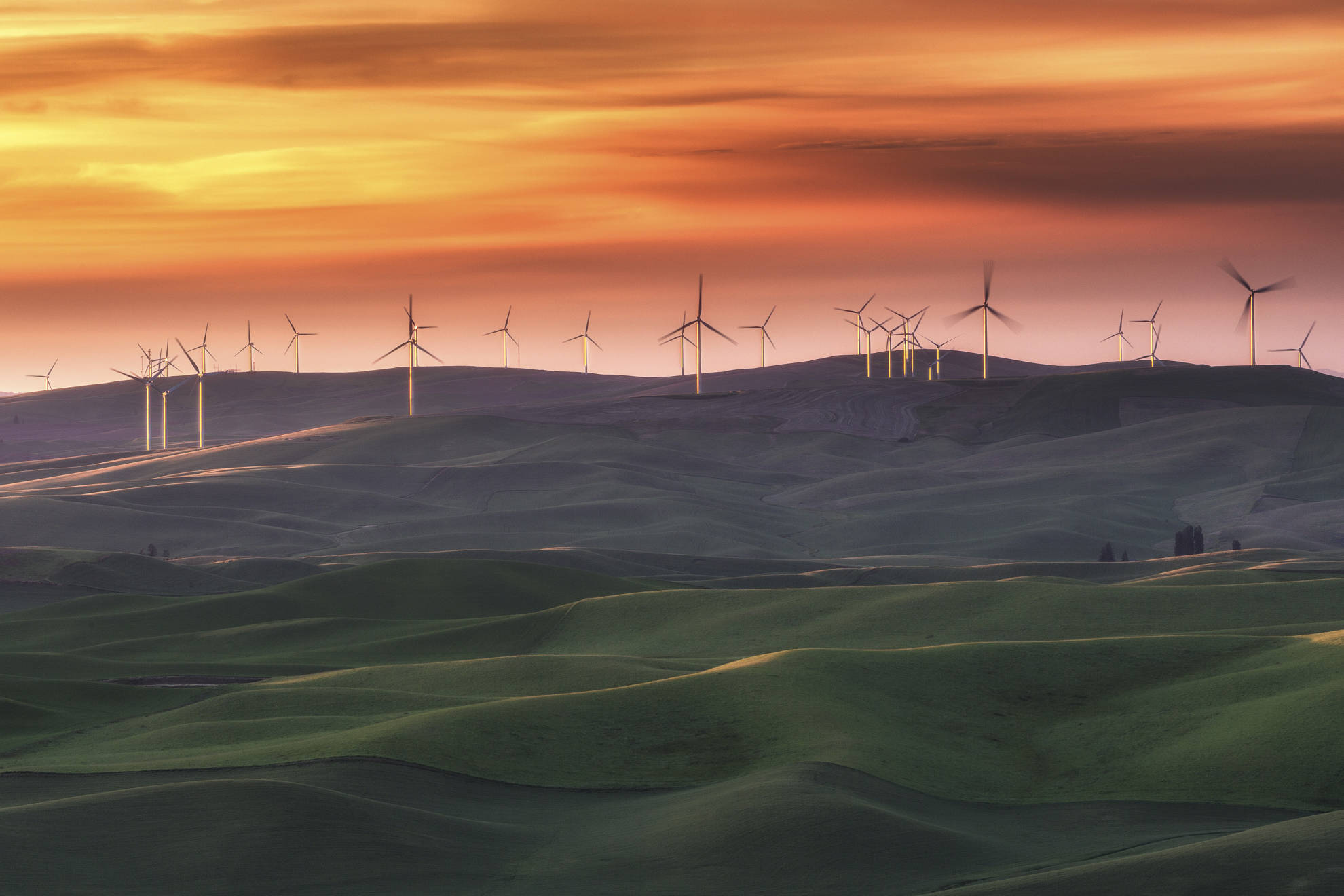The fate of a grieving orca mother and her dead calf hit the members of Gov. Jay Inslee’s orca recovery task force hard. Their job to protect Washington’s shrinking orca population has become personal.
“This is an iconic species in our state,” said Inslee, speaking via telephone Aug. 7 to the task force meeting in Wenatchee. “You can’t understate the emotional impact of orcas. But it’s not just an emotional issue, but a scientific one.”
Two tragedies have hit southern Puget Sound’s three pods of killer whales — the lowest number in a third of century.
The three pods — J, K and L — of killer whales roam around the Salish Sea from spring through fall, then wander down the Pacific Coast in the winter, possibly as far as California.
Until late last year, the three pods had 76 whales. Then a 23-year-old male dubbed “Crewser” in L pod disappeared forever in November 2017.
Their lowest number was 71 in 1976 after 45 were captured and another 13 were killed while being captured in the previous 10 years. That population climbed to 98 in 1995, but shrank to 76 in 2017, according to numbers from The Whale Trail and Center for Whale Research.
Crewser’s disappearance was followed by the July 24 stillborn birth of a calf to a J pod orca nicknamed Tahlequah. Tahlequah carried her calf with her within the pod for at least 17 days while the public followed her mournful journey. The mother was recently spotted without her calf.
The last recorded births of Puget Sound orcas were five in 2015 in the J and L pods, according to the nonprofit Orca Network. In a February interview for Hakai magazine, a National Oceanic and Atmospheric Administration biologist said to adequately rebuild the three pods, those whales would have to give birth to two more babies annually than that year’s deaths.
Malnutrition and poor health due to environmental troubles have been the two named culprits for the three pods’ struggles.
All this prompted Inslee in March to create the task force, which is trying to come up with solutions to three broad threats to the J, K and L pods — lack of food such as their favorite chinook salmon; noise and disturbances from vessels in Puget Sound and the Strait of Juan de Fuca; and manmade toxins entering the Salish Sea’s waters.
“We will hopefully hear about short-term proposals from the task force, things we can do in the short term,” Inslee said. “But we also need long-term proposals.”
One of the primary goals is to find more fish for the orcas to eat.
Orcas are picky eaters, and are not fans of eating coho and steelhead. But they love to chow down on big and fatty adult chinook salmon.
And chinook salmon numbers have dropped from 335.8 million in 1992 to 175.8 million, said task force member Ron Garner of Puget Sound Anglers, citing state government figures.
To reverse this trend, the task force is looking at killing sea lions, who gobble up salmon smolts by the thousands as they swim to the Pacific Ocean. The task force is also looking at increasing salmon hatchery production, improving salmon habitat along shorelines, and possibly removing dams that block young migrating salmon from reaching the Pacific.
Hatchery production and improving fish habitat will likely
be questions of finding money. Task force member Rep. Brian Blake, D-Aberdeen, plans to introduce a bill in January to provide extra funding for hatcheries.
“The whales are starving and they need food,” Blake said. “The rest is ancillary.”
Killing sea lions that munch on young migrating salmon might be trickier. Task force members are leaning to make this recommendation, but acknowledge detailed plans are still unknown on how to actually carry that out.
At the Aug. 7 meeting, about 20 members of the public, including environmental and tribal interests, called for removing the four Lower Snake River dams between Lewiston and the Tri-Cities. Such a move would return the Snake River reservoirs to their original configuration of being a narrower, shallower and faster river while allowing smolts to avoid the dams’ turbines or potentially getting fatal cases of the bends by spilling over the dams to plunge into the waters below.
On the other hand, Port of Whitman Commissioner Tom Kammerzell told the task force that removing the Lower Snake dams would dramatically reduce cheap hydropower produced in Washington; cripple agriculture in the state’s southeastern corner that depends on irrigation water from the Snake; and eliminate barge traffic that makes Lewiston the thriving most-inland port serving the Pacific Ocean.
Other obstacles to removing the Snake dams include the fact that the federal government owns them and not a state-based agency. State and federal politicians east of the Cascade Mountains will fight to preserve those dams because of the huge economic ripple effects of losing them.
Task force members want an inventory of all the state’s dams to see if removing a few smaller ones could improve specific salmon runs.
Another X factor beyond Washington’s direct control will soon come into play. Canada, Northwestern tribes, Washington and Oregon are negotiating an update to a 1985 fishing treaty.
Task force member Phil Anderson is the lead negotiator for Washington and Oregon in the two-year-old talks. He expects the negotiations to finish soon with the tentative agreement going to the American and Canadian governments to approve an updated treaty.
He declined to discuss specifics of the talks. But Anderson expects Canada to agree to trim harvesting of chinook salmon along with some other salmon species in its waters. That will increase the adult chinook for the killer whales to eat. He also expects the treaty modifications to possibly increase hatchery production south of the border.
“We’ll need everyone’s help to get that funding from the federal government,” Anderson said.
A second X factor is a June U.S. Supreme Court tied decision of 4-4, which upheld a lower court ruling that Washington’s government has to upgrade several hundred culverts on streams passing beneath roads and railroads that are hampering fish passages across the state. Finding the money will be a significant problem in the 2019 legislative session. While no cost estimate has been nailed down, the price is expected to run into billions of dollars over the next decade.
Meanwhile, the task force is also looking how vessels — ferries, ocean-going ships, whale-watching boats and pleasure craft — can be prevented from disturbing the orcas.
Fix-it measures under consideration include limiting the speed of whale-watching boats and other smaller vessels to a speed of five knots whenever they are within sight of orcas. The task force wants to limit the use of echo sounders to a specific frequency to avoid disturbing the mammals. Also under consideration is a recommendation to increase the legal buffer between the whales and boats from 200 yards to 400 yards. Another likely recommendation is having Washington Department of Fish and Wildlife officers regularly patrol areas around orca pods with discretionary powers to cite boats for being too fast or too close.
Task force members are debating whether permanent boat-free zones should be set up for orcas to take refuge.
Plus the task force is thinking about calling for reducing ferry boat speeds around orca pods when appropriate.
“We’re slowing down boats to protect a dozen landowners (in Kitsap County’s Rich Passage) from erosion. We can slow them down to protect an iconic species,” said task force member and Shoreline Mayor Will Hall.
Task force member Rep. Kevin Ranker, D-Orcas Island, took a crack at vessel enforcement issues earlier this year during the legislative session. His bill died in the last-minute traffic jam of bills at the end of the 2018 session.
Ranker plans to resurrect that bill, which originally prohibited a boat from going faster than seven knots within 400 yards of an orca in Washington’s waters. It also would restrict aircraft and drones from coming within 200 yards — even vertically of an orca. Ranker’s previous bill would also have required a study on the impacts of orcas by human-made noises. And it called for Washington and British Columbia to coordinate orca recovery measures. Finally, his original bill would have required the state to have a full-time law enforcement boat in orca waters during the peak viewing seasons to ensure the laws are followed.
The final broad threat to orcas is pollution in Puget Sound. The chinook eat polluted food, so contaminated salmon are eaten by the killer whales.
The task force acknowledged that the use of most polychlorinated biphenyls (cancer-causing PCBs) has been banned. But task force members are considering asking the state to ban the use of the remaining PCBs that are still legal. Discharge permits for sewage plants and stormwater facilities should become stricter in combing out contaminants, task force members suggested.
And the state should inventory all the chemical pollution sources in the state and prioritize which should be tackled first to protect salmon and orcas, task force members said.
“We must act collectively with one determined will,” said the task force’s co-chairwoman Stephanie Solien.
Individual task force members are scheduled to submit their top priorities suggestions to the committee’s staff by Aug. 16 to spark further discussions. The task force is scheduled to submit its first formal recommendations to Inslee on Nov. 1.








